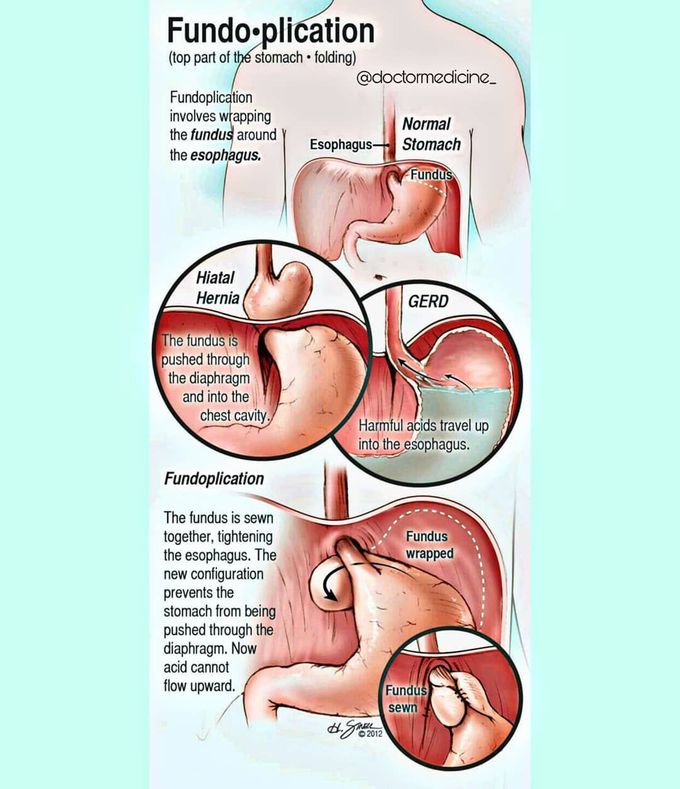


Fundoplication procedure
During the fundoplication procedure, the part of the stomach that is closest to the entry of the esophagus (the fundus of the stomach) is gathered, wrapped, and sutured (sewn) around the lower end of the esophagus and the lower esophageal sphincter. (The gathering and suturing of one tissue to another is called plication.) This procedure increases the pressure at the lower end of the esophagus and thereby reduces acid reflux. Also, during fundoplication, other surgical steps frequently are taken that also may reduce acid reflux. For instance, if the patient has a hiatal hernia (which occurs in 80% of patients with GERD), the contents of the hernia sac (the stomach) may be pulled down from the chest and the opening the diaphragm (the hiatus) through which the esophagus passes from the chest into the abdomen sutured so that stomach remains within the abdomen. Fundoplication may be done using a large incision (laparotomy in the abdomen or thoracotomy in the chest) or a laparoscope, which requires only several small punctures in the abdomen. The advantage of the laparoscopic method is a speedier recovery and less post-operative pain. @doctormedicine_
Source: https://www.instagram.com/p/Bo_Yb0GA_1-/?utm_source=ig_share_sheet&igshid=nsam7oy53wld
